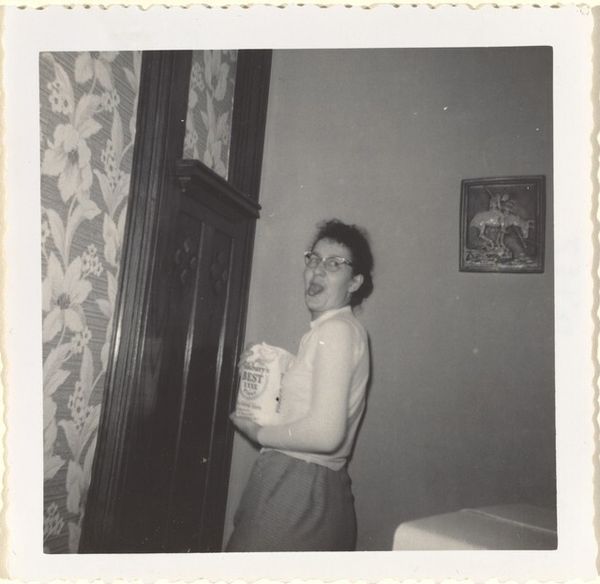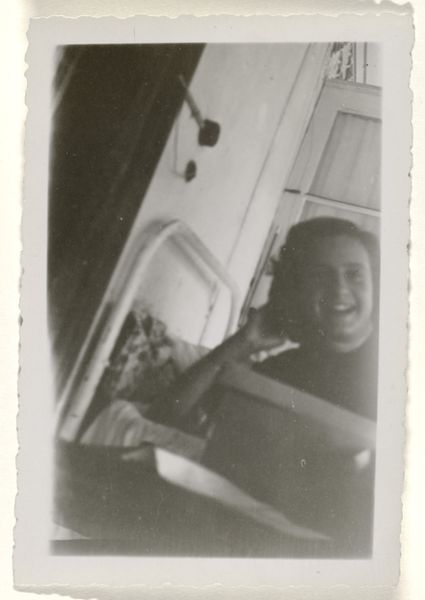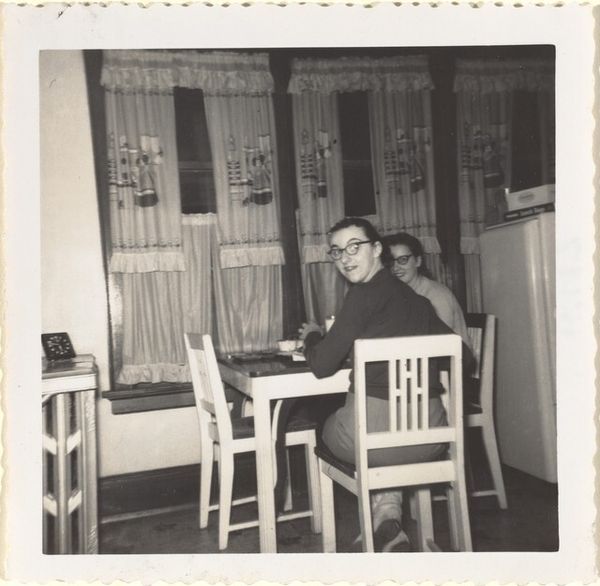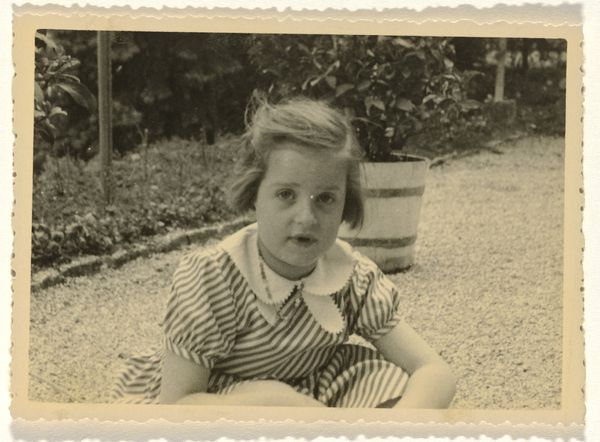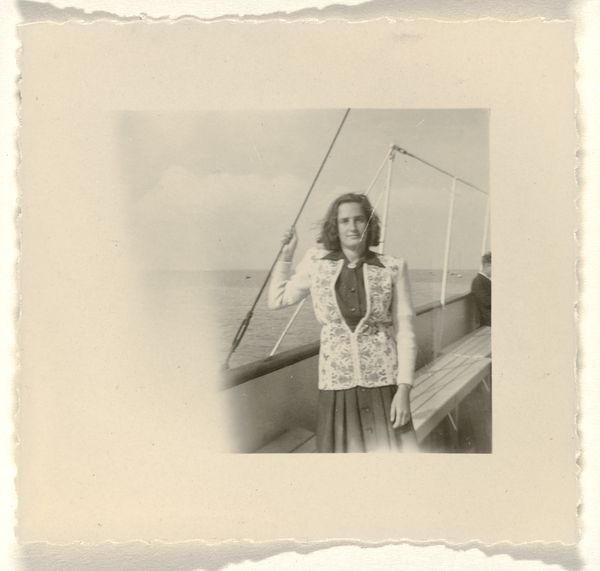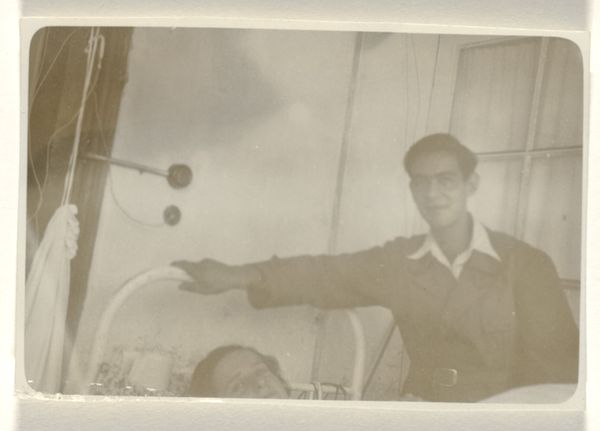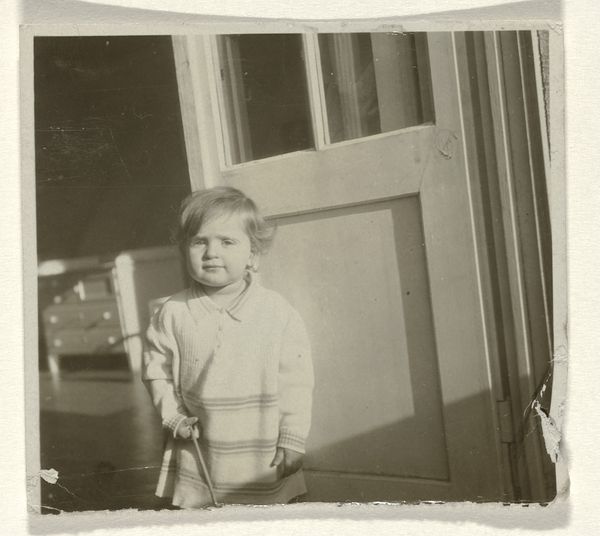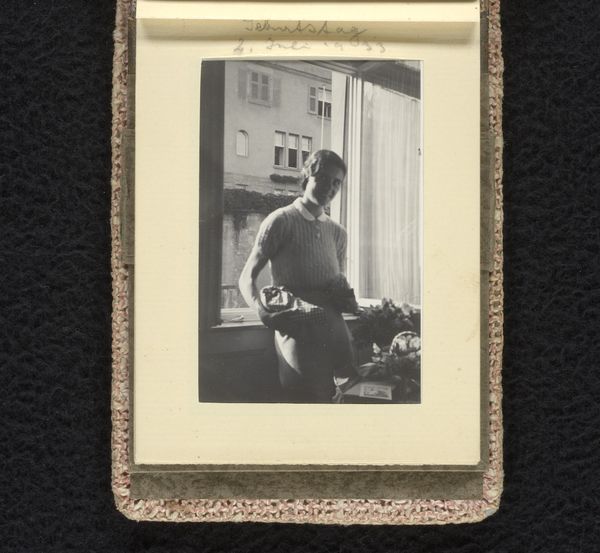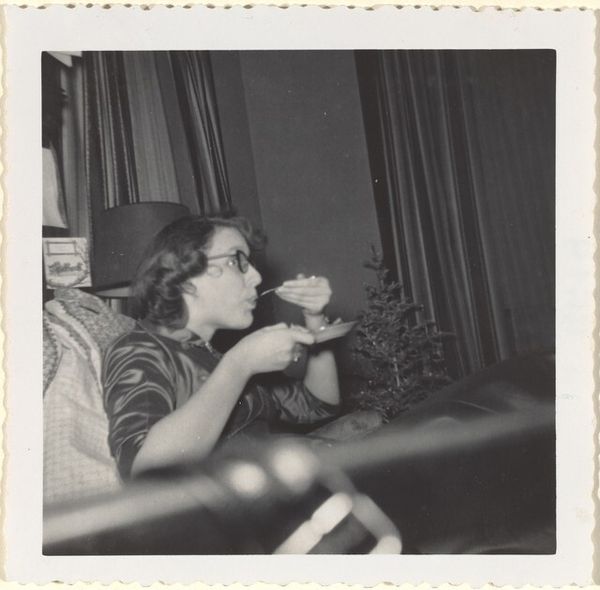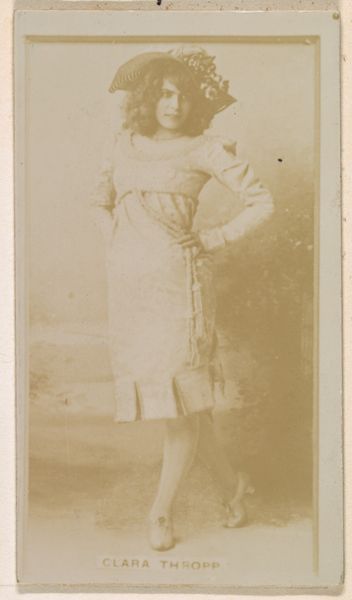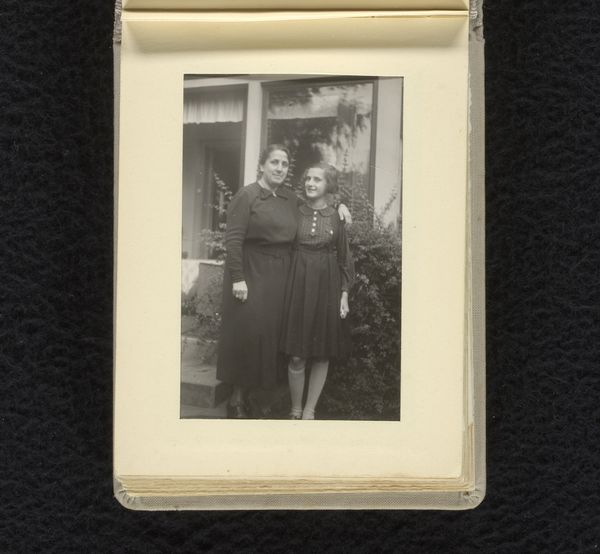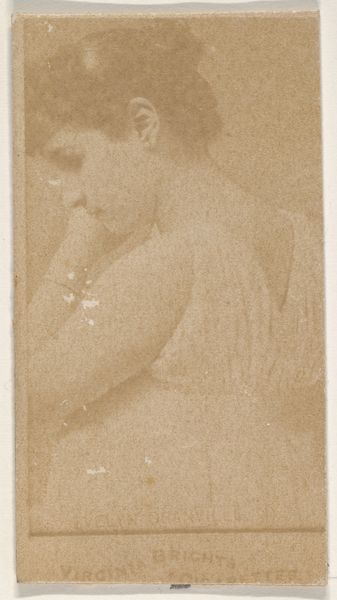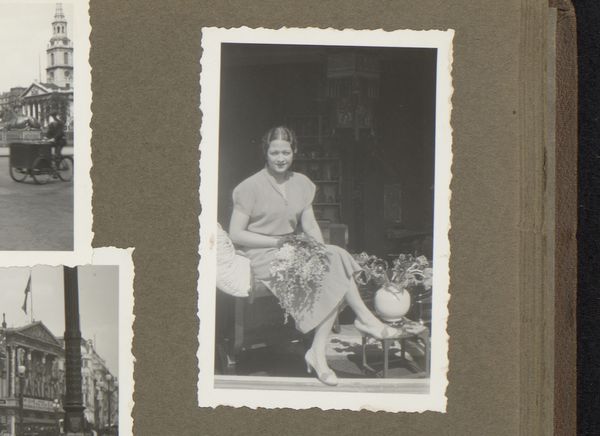
photography, gelatin-silver-print
#
photography
#
gelatin-silver-print
#
genre-painting
#
realism
Dimensions: height 50 mm, width 50 mm
Copyright: Rijks Museum: Open Domain
Editor: This gelatin-silver print, part of the “Photographs from the Estate of Isabel Wachenheimer," was taken between 1938 and 1943. The young woman's smile and the slightly out-of-focus man behind her create a strange, compelling tension. How do you interpret the symbols within this seemingly simple portrait? Curator: I’m drawn to the visual language of light and shadow in this photograph. The lamp behind the woman almost forms a halo, an enduring symbol of hope and illumination, contrasting with the obscured figure. Consider the psychological weight of images taken during this era; could the man represent the fading security of the pre-war world? Editor: That’s a fascinating point about the lamp. I hadn't considered its symbolic connection to hope, especially juxtaposed with the uncertainty of the time. Do you think the blurred figure hints at more than just a physical distance? Curator: Indeed. Blur can signify many things: ambiguity, the ephemeral nature of memory, even a looming threat. The choice to render him partially visible keeps him present, a constant echo in Isabel’s life perhaps, or even a larger societal anxiety. It’s a study in absences as much as presences. What feeling does the edge of the paper evoke in you? Editor: The serrated edge of the print itself almost feels like a fragment, a piece of a larger, perhaps lost, narrative. It adds to the sense of intimacy, like we’re peering into a deeply personal moment snatched from time. Curator: Precisely. The materiality of the photograph, the way it presents itself as an object, reinforces the emotional and cultural layers embedded within the image. This is more than just a picture; it’s a relic imbued with layered meanings. Editor: I’ll certainly never look at old photographs the same way again. The depth of symbolic interpretation you’ve shared is truly eye-opening.
Comments
rijksmuseum about 2 years ago
⋮
The German Eugen Wachenheimer had a brilliant career at the Deutsche Bank and served as a naval officer in the First World War. In 1922 he married Else Moos. The Anti-Jewish laws instituted by the Nazi regime forced them to flee to the Netherlands in 1937. The photograph at the lower right is the last one taken of Eugen. He stands with his back to the camera behind his daughter. Eugen and Else were gassed at Auschwitz-Birkenau in 1944.
Join the conversation
Join millions of artists and users on Artera today and experience the ultimate creative platform.
